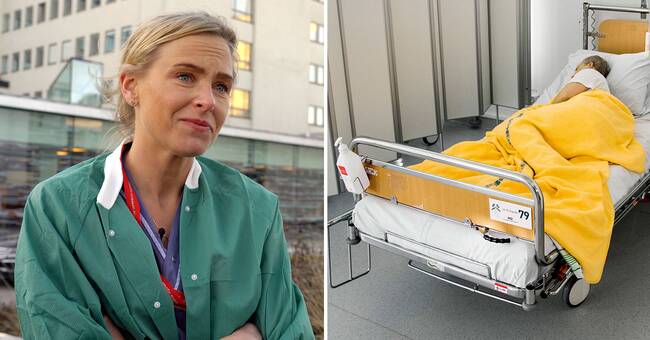According to the National Board of Health and Welfare's definition, a care place is "[a place] in inpatient care with physical design, equipment and staffing that ensures patient safety and working environment".
Since 2006, we have 5,000 fewer such places in the country, according to data from Sweden's municipalities and regions.
SVT has spoken to several doctors around the country who say that the lack of care places has major consequences for seriously ill patients and overworked staff.
Overcrowding and so-called "satellite patients" - where wards with vacancies may receive patients with diseases other than those usually treated - are described by doctors as more of a rule than an exception.
- It is a Swedish problem that we have large retirements and that there is a lack of the right skills, says Pia Lundbom, director of health and medical care in Region Skåne.
Older men end up in the gym
Johan Styrud is chief physician at Danderyd Hospital and chairman of the Stockholm Medical Association.
He describes an afternoon at the hospital as very messy, where you do everything to find free beds.
An older man can end up in the emergency department - just because there is room.
- Care places are expensive.
This has been slowly cut back year after year.
Assistant chief physician Karin Hildebrand, who works in the intensive care unit at Södersjukhuset in Stockholm, also thinks that the shortage of care places is serious.
She has worked in emergency care for 20 years and says that the emergency room in particular is greatly affected.
- The emergency room quickly becomes full when we can not send patients to other wards.
We must take care of patients' acute conditions when they come in, not continue to care for those who really should be somewhere else, she says.
Karin Hildebrand is afraid that the seriously ill will be hardest hit by the lack of care places.
- They can have a hard time making their voices heard, says Karin Hildebrand.
“Do not need as many places”
The fact that there are fewer care places does not only have to be due to staff shortages or cuts, says Björn af Ugglas, researcher and doctor of medical science at Karolinska Institutet.
- Medical development is progressing.
This means that we do not need as many care places, he says, and continues:
- In the beginning it was good, care was made more efficient, but now it has gone too far.
Now that means we have no safety margins, he says.
Javascript is disabled
Javascript must be turned on to play video
Read more about browser support
The browser is not supported
SVT does not support playback in your browser.
We therefore recommend that you switch to a different browser.
Read more about browser support
In 14 years, the number of care places in Sweden has decreased by 5,000. But why?
SVT sorts out with several experts.
The picture is a montage.
Photo: SVT Grafik

